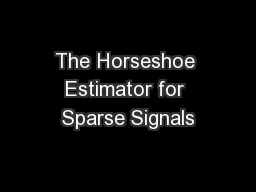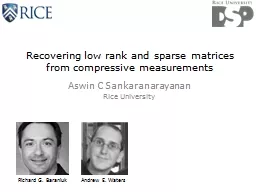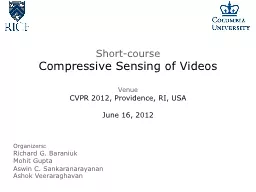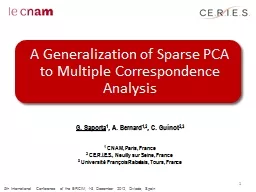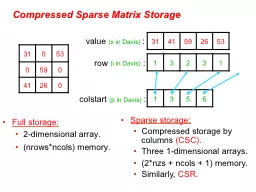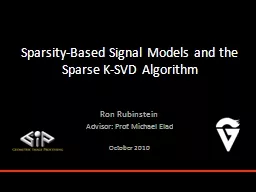PPT-The Horseshoe Estimator for Sparse Signals
Author : lois-ondreau | Published Date : 2018-10-26
Reading Group Presenter Zhen Hu Cognitive Radio Institute Friday October 08 2010 Authors Carlos M Carvalho Nicholas G Polson and James G Scott Outline Introduction
Presentation Embed Code
Download Presentation
Download Presentation The PPT/PDF document "The Horseshoe Estimator for Sparse Signa..." is the property of its rightful owner. Permission is granted to download and print the materials on this website for personal, non-commercial use only, and to display it on your personal computer provided you do not modify the materials and that you retain all copyright notices contained in the materials. By downloading content from our website, you accept the terms of this agreement.
The Horseshoe Estimator for Sparse Signals: Transcript
Download Rules Of Document
"The Horseshoe Estimator for Sparse Signals"The content belongs to its owner. You may download and print it for personal use, without modification, and keep all copyright notices. By downloading, you agree to these terms.
Related Documents

